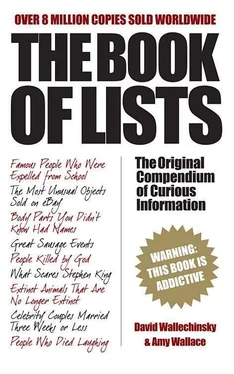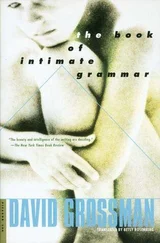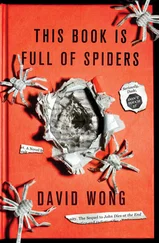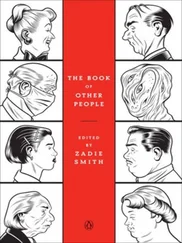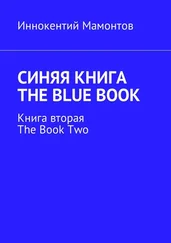A CABINET DUEL
On September 21 1809, at the height of the war against France, two Tory Cabinet ministers fought a duel. One went on to become Prime Minister. The other became the architect of post-Napoleonic Europe. Lord Castlereagh, the Secretary for War, believed — correctly — that George Canning, the Foreign Secretary, was plotting to have him replaced and challenged his colleague to a duel. Both men resigned their posts and met at dawn on Putney Heath in southwest London. Canning, who had never fired a pistol in his life, missed twice. But Castlereagh, with his second shot, lightly wounded his opponent in the left leg. Both men were roundly criticised by both peer and public. George III overlooked Canning and chose a man called Spencer Percival to be Prime Minister instead. Three years later Percival won the dubious honour of becoming the only British PM ever to be assassinated. Canning had to wait until 1827 before securing the premiership, and even then his tenure was brief; he died unexpectedly three months after entering Downing Street. Castlereagh went on to achieve greatness as a statesman at the Congress of Vienna but was never popular. He committed suicide in 1822 amid allegations of homosexuality and his funeral procession was booed as it entered Westminster Abbey.
A VICE-PRESIDENTIAL DUEL
Aaron Burr, the Al Gore of his day, lost the US presidential election in 1800 by a handful of votes. Thomas Jefferson was elected instead and made his defeated opponent Vice President. Burr blamed his defeat on Alexander Hamilton, one of the great figures of the American Revolution. Hamilton — a close friend of Washington, co-framer of the constitution and a former head of the army — had successfully persuaded a tied electoral college to swing behind Jefferson. So when Vice President Burr discovered a few years later that Hamilton had bad-mouthed him in a letter, he issued an instant challenge. Hamilton — by then retired from politics — was opposed to duelling on moral and religious grounds. But the duty of honour was greater and so, on July 11, 1804, both men crossed the River Hudson with their seconds to what is now New Jersey. Burr was determined to shoot his rival dead, which he did. Hamilton, as he was shot, discharged his own pistol into the ground. There was huge public revulsion at the death of such a popular figure and the Vice President found himself on the receiving end of some seriously bad headlines. He was deprived of his New York citizenship and forced into hiding. In later years, he was shunned by society and died destitute on Staten Island in 1836.
AN ELEVATED DUEL
Two Frenchmen chose to fight from balloons over Paris because they believed they had ‘elevated minds’. Monsieur de Grandpré and Monsieur de Pique quarrelled over a famous opera dancer called Mademoiselle Tirevit, who was mistress of one and lover of the other. So, at 9 a.m. on May 3 1808, watched by a huge crowd, the two Parisians climbed into their aircraft near the Tuileries and rose gently up into the morning air. At about 2,000 ft, when the balloons were about 80 yards apart, de Pique fired his crude blunderbuss and missed. De Grandpré aimed his more effectively. De Pique’s balloon collapsed, the basket tipped, and he and his second fell headfirst to their deaths on the rooftops below. De Grandpré and his second, however, drifted happily away in the light north-westerly breeze before landing safely 20 miles away.
13 OLYMPIC MEDALLISTS WHO ACTED IN MOVIES
1. JOHNNY WEISSMULLER (4 golds; 1924 and 1928 swimming)
While swimming at a club on Sunset Boulevard in Hollywood, Weissmuller was invited to try out for the part of Tarzan. In 1932 he made his film debut in Tarzan, the Ape Man . He eventually starred in 11 more Tarzan films.
2. HERMAN BRIX (silver; 1928 shot put)
Brix changed his name to Bruce Bennett, and pursued a successful career that included performances in Mildred Pierce (1945) and The Treasure of Sierra Madre (1948). He also acted in such clunkers as The Alligator People (1959) and The Fiend of Dope Island (1961).
3. BUSTER CRABBE (gold; 1932 400-metre freestyle)
Crabbe won his gold medal by one-tenth of a second. He later recalled that that tenth of a second led Hollywood producers to discover ‘latent histrionic abilities in me’. In 1933 Crabbe made his film debut as Karpa the Lion Man, in King of the Jungle . He eventually appeared in 53 movies, but is best known for his roles as Flash Gordon and Buck Rogers.
4. HELENE MADISON (gold; 1932 100-metre freestyle)
Madison, who once set 16 world records in 16½ months, was invariably described by sportswriters as ‘shapely’. After her Olympic triumph, she played an Amazon captain of the guards in the 1933 satire The Warrior’s Husband . Unfortunately, her performance was undistinguished and she never acted again.
5. SONJA HENIE (3 golds; 1928, 1932 and 1936 figure skating)
Henie’s first film, One in a Million (1937), was a box-office winner, and nine more followed. Although her acting was never as smooth as her skating, her Hollywood career brought her great financial success.
6.–7. GLENN MORRIS (gold; 1936 decathlon) and ELEANOR HOLM (gold; 1932 100-metre backstroke).
Tarzan’s Revenge (1938) starred two Olympic champions as Tarzan and Jane. Unfortunately, Holm was described as looking ‘bored’ throughout the film, and reviewers found Morris’s performance ‘disappointing’ and ‘listless’. Holm never acted again.
8. HAROLD SAKATA (silver; 1948 light-heavyweight eightlifting)
After the Olympics, Sakata pursued a successful career as a professional wrestler and then moved on to acting. He appeared in eight films, but it was his first role that gained him international stardom — the evil Oddjob in Goldfinger (1964).
9. CAROL HEISS (gold; 1960 figure skating)
Heiss, described by Variety as ‘a fetching lass’, made her film debut in the title role in Snow White and the Three Stooges (1961). The film was panned, but she received praise for her acting, singing and, of course, her skating. However, she never appeared in another movie.
10. JEAN-CLAUDE KILLY (3 golds; 1968 Alpine skiing)
Killy co-starred as a con-man ski instructor in the mediocre 1972 film Snow Job .
11. CORNISHMAN V (2 golds; 1968 and 1972 three-day event)
The only non-human Olympic medallist to pursue a successful film career, Cornishman V helped two different riders to victory in equestrian events. He later appeared in Dead Cert (1974), based on a Dick Francis novel, and International Velvet (1978).
12. BRUCE JENNER (gold; 1976 decathlon)
Jenner’s one and only film appearance was in the loud and awful 1980 film Can’t Stop the Music . He played a staid lawyer who is drawn into the irresistibly fun New York disco scene.
13. MARK BRELAND (gold; 1984 welterweight boxing)
Breland is one of the few athletes to appear in a movie before he appeared in the Olympics. In 1983 he received good reviews for his role in The Lords of Discipline . He played the first black cadet in a Southern military academy.
Note : Among the dozens of other Olympic athletes who have appeared in movies are 1924 pole-vault champion Lee Barnes, who served as a stand-in stuntman for Buster Keaton in College (1972); 1948 and 1952 decathlon champion Bob Mathias, who appeared in four films, including It Happened in Athens (1962) with Jayne Mansfield, and 1952 and 1956 triple jump champion Adhemar Ferreira da Silva, who appeared in the internationally acclaimed film Black Orpheus (1958). Ken Richmond, who won a bronze medal as a wrestler in 1952, was better known as the muscleman who struck the gong at the beginning of J. Arthur Rank films.
Читать дальше
